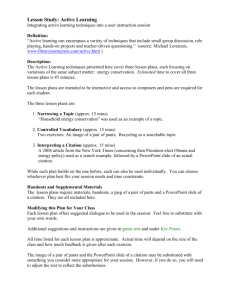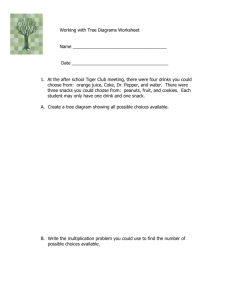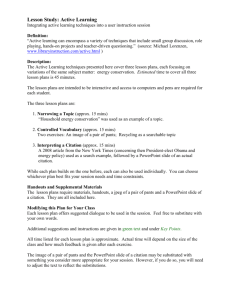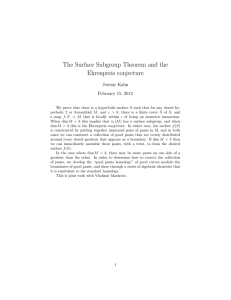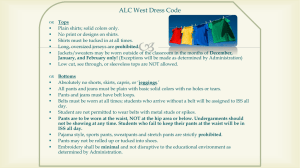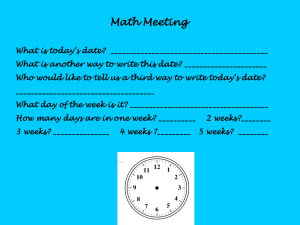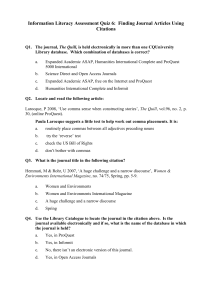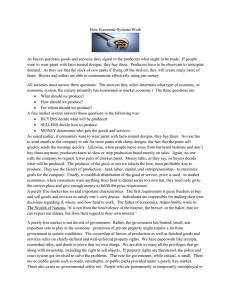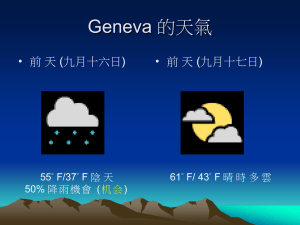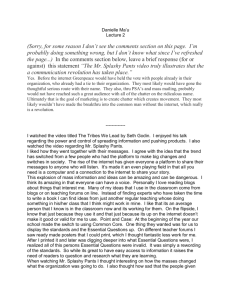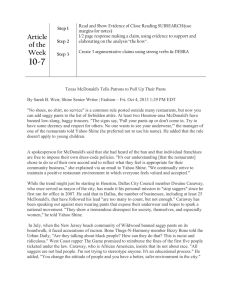Controlled Vocabulary
advertisement
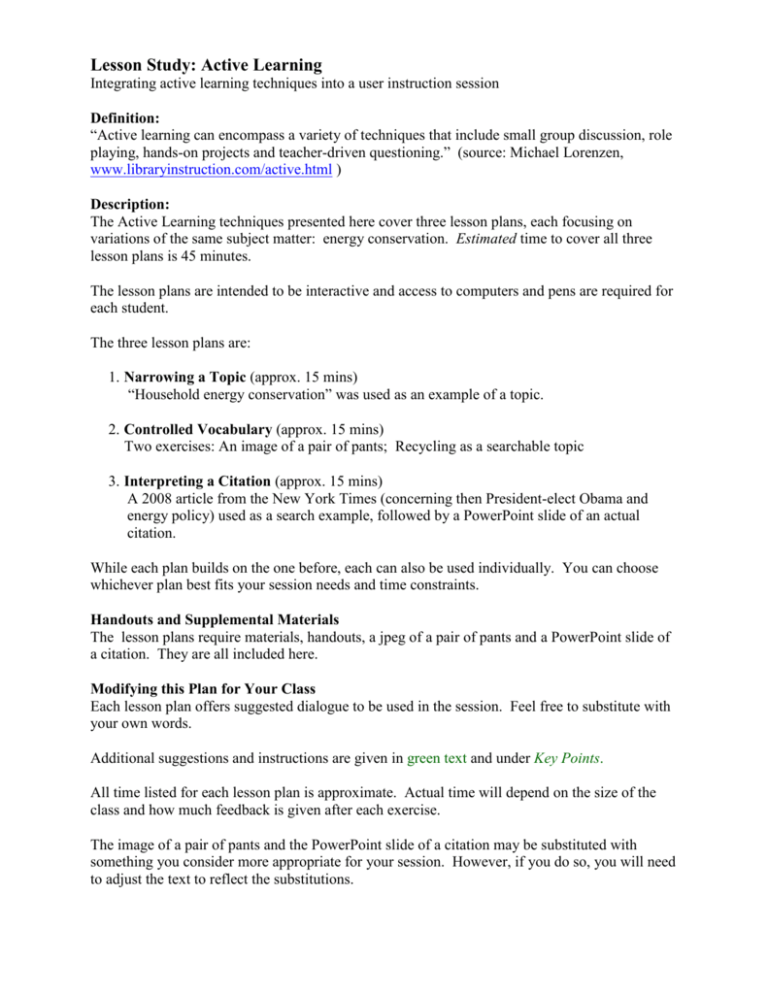
Lesson Study: Active Learning Integrating active learning techniques into a user instruction session Definition: “Active learning can encompass a variety of techniques that include small group discussion, role playing, hands-on projects and teacher-driven questioning.” (source: Michael Lorenzen, www.libraryinstruction.com/active.html ) Description: The Active Learning techniques presented here cover three lesson plans, each focusing on variations of the same subject matter: energy conservation. Estimated time to cover all three lesson plans is 45 minutes. The lesson plans are intended to be interactive and access to computers and pens are required for each student. The three lesson plans are: 1. Narrowing a Topic (approx. 15 mins) “Household energy conservation” was used as an example of a topic. 2. Controlled Vocabulary (approx. 15 mins) Two exercises: An image of a pair of pants; Recycling as a searchable topic 3. Interpreting a Citation (approx. 15 mins) A 2008 article from the New York Times (concerning then President-elect Obama and energy policy) used as a search example, followed by a PowerPoint slide of an actual citation. While each plan builds on the one before, each can also be used individually. You can choose whichever plan best fits your session needs and time constraints. Handouts and Supplemental Materials The lesson plans require materials, handouts, a jpeg of a pair of pants and a PowerPoint slide of a citation. They are all included here. Modifying this Plan for Your Class Each lesson plan offers suggested dialogue to be used in the session. Feel free to substitute with your own words. Additional suggestions and instructions are given in green text and under Key Points. All time listed for each lesson plan is approximate. Actual time will depend on the size of the class and how much feedback is given after each exercise. The image of a pair of pants and the PowerPoint slide of a citation may be substituted with something you consider more appropriate for your session. However, if you do so, you will need to adjust the text to reflect the substitutions. LESSON PLAN 2 Controlled Vocabulary (15 mins) Materials needed: - A jpeg of a pair of pants. We’ve included one here for you but feel free to substitute with some other image. Be sure to keep the filename neutral to avoid influencing feedback from the class. Now that you have a paper topic, you’ll want to think of what terms to use when you’re searching for articles on your topic. To help understand how best to do this, we’ll try another group activity. Write the URLs for www.jcrew.com , www.overstock.com , and www.oldnavy.com on the whiteboard. Depending on how many students are in the class, break them up into small groups or have them work individually. At least one student should be looking at each of the three websites listed on the board. Assign one group or student to look at JCrew, one group or student to look at Old Navy, and one group or student to look at Overstock.com. Show the image of the pants on the screen but do not use the word pants! (Tip: article of clothing) Within the website you’ve been given, find a piece of clothing as close to this as you can. Take notes on how you’re searching so that you can describe your methods afterwards. You have one minute to do this. What terms did you use in group 1? How about Group 2? Group 3? Make a separate list for each on the white board, circling those terms/strategies that seemed successful. Which ones worked well for your site? Why? Key points to mention if they don’t come out in the discussion: Each site has its own language or vocabulary You may be using terms that make perfect sense to you, but they’re not the only ones that are right If you already know the vocabulary, this can be helpful, but it might exclude stuff you wouldn’t have seen if you’d been searching with other related terms (or browsing) Believe it or not, library databases of scholarly articles have a lot in common with these online retailer sites. Let’s now search for articles on recycling in a few different interfaces to try to identify what standardized language or terms the database uses to describe articles on this topic. Everyone should click on the home page link and go to the Search/MLibrary window. Within the search box, each group will be entering a different database. Deselect all options except Databases. On the whiteboard, write the names of the three databases to be used: Proquest Research Library, Ecology Abstracts, PsycInfo. Assign a database to each group. Pass out the worksheet. You have 3 minutes to search for articles on Recycling in the database and to fill out the worksheet. So let’s find out what you learned. What does database X call their specific language or vocabulary terms? (CSA: descriptor; EBSCO: subject words; Proquest: Topics and Subjects) Where do you see this language or vocabulary? Open the individual databases as they discuss them and try to follow along with pertinent portions of what the students are saying they did. Key points to mention if they don’t come out in the discussion: Each database uses its own controlled vocabulary Using all the subject headings that a database might use for your topic is the most effective way to get a focused list of articles that are most closely related to your topic
